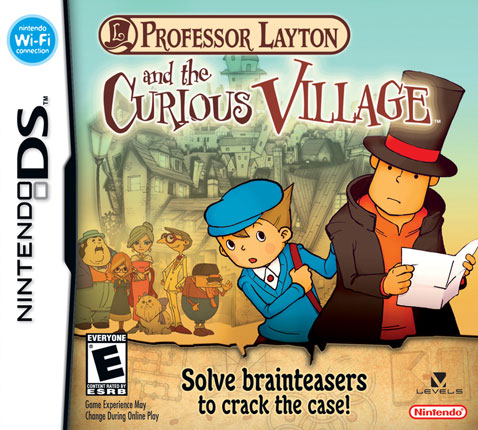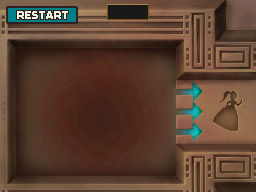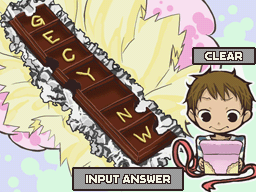
Professor Layton and the Curious Village is a delightfully charming adventure game for the DS (emphasis seemingly required whenever describing this game). Set in some wacky mashup of modern and 1800’s Dickinsonian England (minus the suffering of the lower classes) Professor Layton puts you in charge of the titular professor and his young assistant Luke as they solve completely unrelated logic puzzles to advance the narrative within the game.
Now typically when you combine “adventure game” and “unrelated logic puzzle” you expect terrible results. Gamers by now have been conditioned from years of lazy adventures games that threw in absurd puzzle after absurd puzzle that required some innate knowledge of the designer’s twisted logic in order to be solved. Particularly many of the 3D FMV adventure games in the 90’s starting with Myst and including notable games like The 7th Guest and The Journeyman Project were notorious for these puzzles that had little to no bearing with the player’s current environment and situation (the classic arrange X items in Y order with Z moves puzzle).
In many ways, Professor Layton follows a similar formula. Hardly any of the puzzles in the game directly relate to anything the player is currently doing (the game even admits to the absurdity of this). Yet while other adventure games succumbed to the pitfalls inherent in this approach, the developers at Level 5 responsible for Professor Layton managed to deftly avoid them for the most part. There’s no serious punishment for failure in Professor Layton: no death when the puzzle is incorrectly solved or some warp back to a previous position. The only thing you lose is the amount of piccarats (the currency of the Layton universe) earned from solving the puzzle and even then the punishment is slight. Nor are most puzzles required by the game. Since just about any puzzle is optional players can choose which puzzle to solve at their own leisure. Finally, the game is generous with hints for puzzles. Each puzzle has three hints that can be easily unlocked by spending one’s hint coins that can easily be found throughout the entire game.
That being said, Professor Layton is not perfect. While some puzzles are genuinely clever, there are a fair share of puzzles that are boring and tedious. This is made more frustrating because many of the puzzles in the game are fun to solve. For example, an early puzzle in the game is “The Biggest Star”:

An early, clever puzzle in Professor Layton.
This is an example of a puzzle that’s uses clever wordplay, some simple misdirection, and requires a little lateral thinking to solve. And you feel like exclaiming “a-ha!” upon solving it. Contrast that with something like the “Princess in a Box” sliding box puzzles:

Sliding box puzzles, not so clever.
This and a number of other puzzles in Layton (like moving a ball through a box maze) are on the opposite side of the spectrum. There’s no real cleverness involved here as much as tedious trial and error. All of these puzzles can be solved through sheer determination and brute force. The only challenge is solving the puzzle in the least amount of moves, but there’s little motivation to do so.
Professor Layton despite some flaws is still a great title though. I would encourage anyone with a DS to pick it up. It’s certainly unique, playable for just about anyone, and has a lot of neat features that make it more than a simple adventure title. It’s also a slightly episodic adventure series (another thing I love) with one sequel already out in Japan and another soon to be released.
Before we finish, there’s one more puzzle to vent about…

There’s no explanation for this one.
This puzzle defies any logic.
Leave a Reply